Computer Home Entertainment (2022)
Design-Fiction Video Sculpture
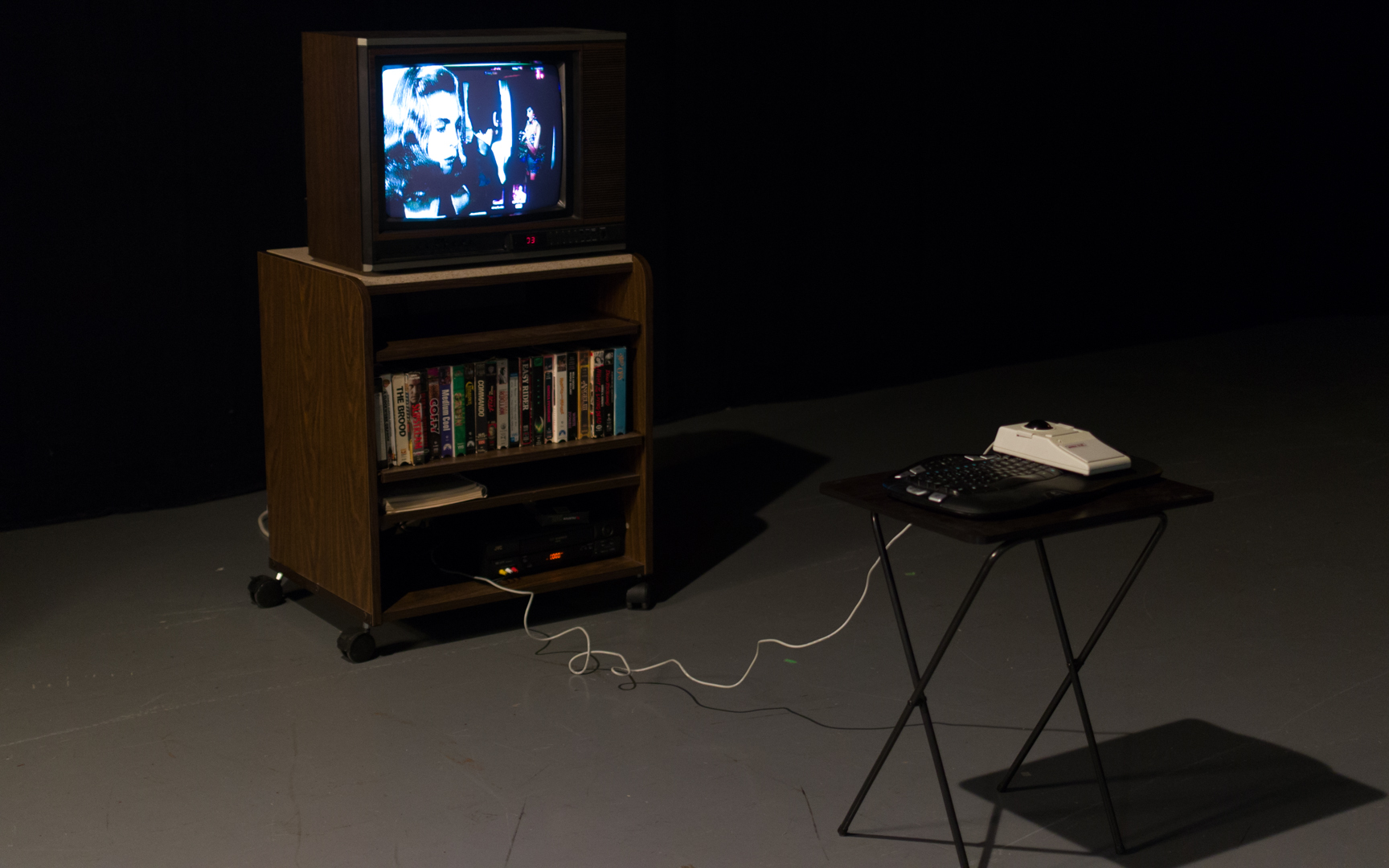
Materials: Mitsubishi Television, JVC VCR, MacMini 2009, Quicktime Player, HDMI to AV convertor, Logitech Wireless Keyboard, Mouse-Trak, Video Cassettes, Rolling TV Cart, Coaxal Cable, USB Capture 2.0
This media art assemblage of a
Cathode Ray Tube Television, Video Cassette Player (VCR), Computer Components,
and Furniture is an imaginary revision for typical home entertainment video
player and library. The low-definition monitor acts as a GUI for a hidden
computer operating system. The computer transmits to the TV monitor by
communicating with the VCR via Audiovisual conversion. The computer stores,
plays back, and digitizes files of the VHS tapes housed in the cabinet below
through the VCR. Each video file’s thumbnail image is a VHS slipcase icon. The
wired mouse is used for selecting the digital videotape library. The keyboard
is wireless.
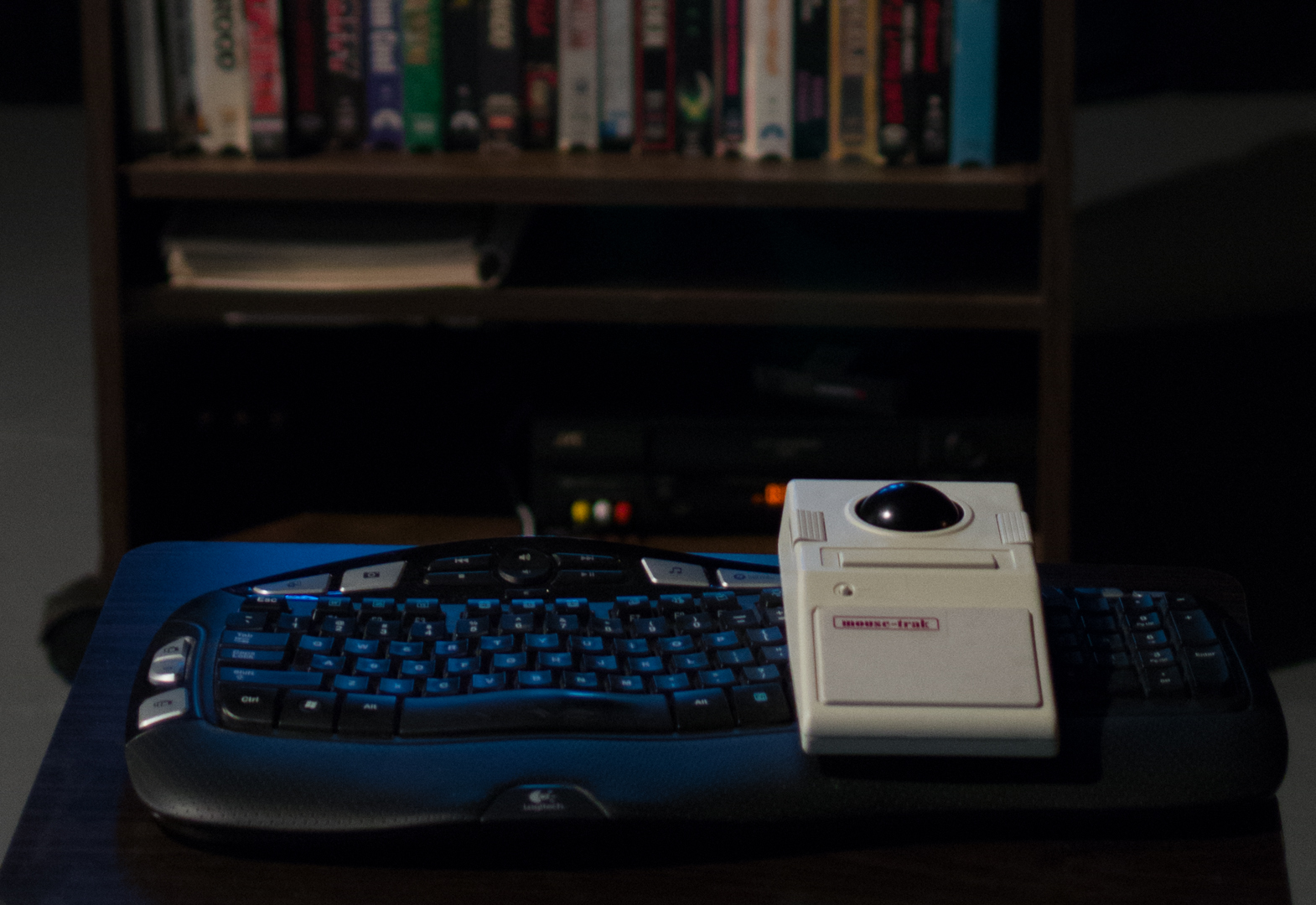
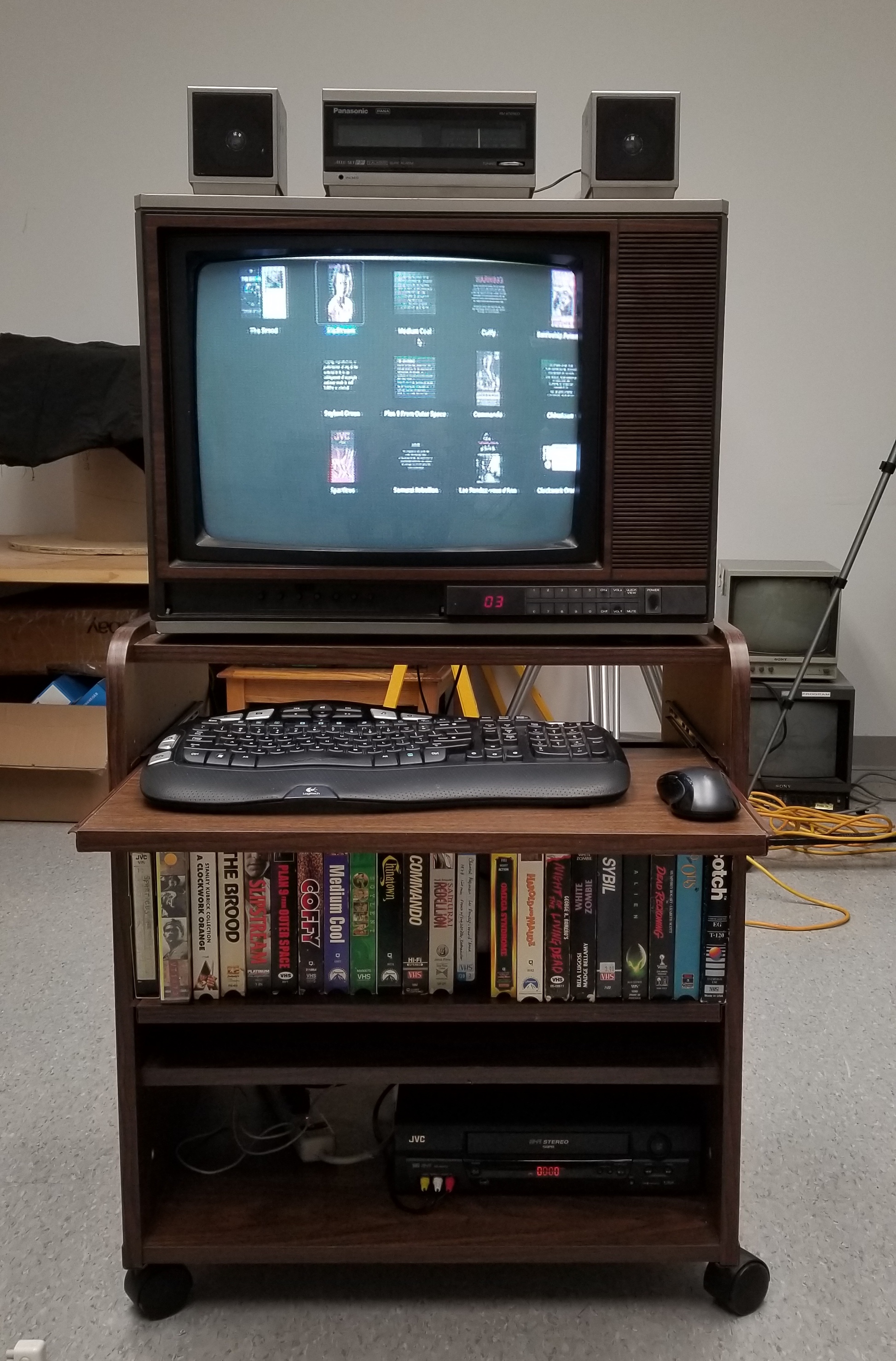
Initial Build @ CFA 271 Studio

Speculative Design DMS 515
One-part interactive archive and another part media sculpture - this Home-Computer is multifaceted as a composition, utility, and meaning. Starting off a series of device experiments and tinkering with the definition of video signal it took on new values of media art and technology when my practice was informed by course work in DMS 515 Speculative Design under Alex Reid. There is a connection between cinema, television, and computers with the screen being the common interface circulating cultural usage between them. After assembling the piece began to take on speculative direction as to what video and a videotape archive could be in an alternate past and future.
As a media archaeology project Computer Home Entertainment possesses imaginary specifications which are both unlikely yet probable. It is a design-fiction inspired by the reality of home electronics, research into Soviet style consumer history, and materialized in a digital-to-analog process with obsolete video. The fiction removes digitality from history as we know it with home video remaining as analog cassette playing but reintroduces digital with the real period of standardization of the USB port in 1997. When the sculpture is viewed immediate reactions are ironic grins recognizing a past form of television mixed with memories of watching old video cassettes and personal biographies of old media viewing locations are discussed When used the files selected and arranged on screen depend on the viewers recognition of the movie titles. This media assemblage produces a past reality that never happened, a possible present, and a probably future of desktop video production.
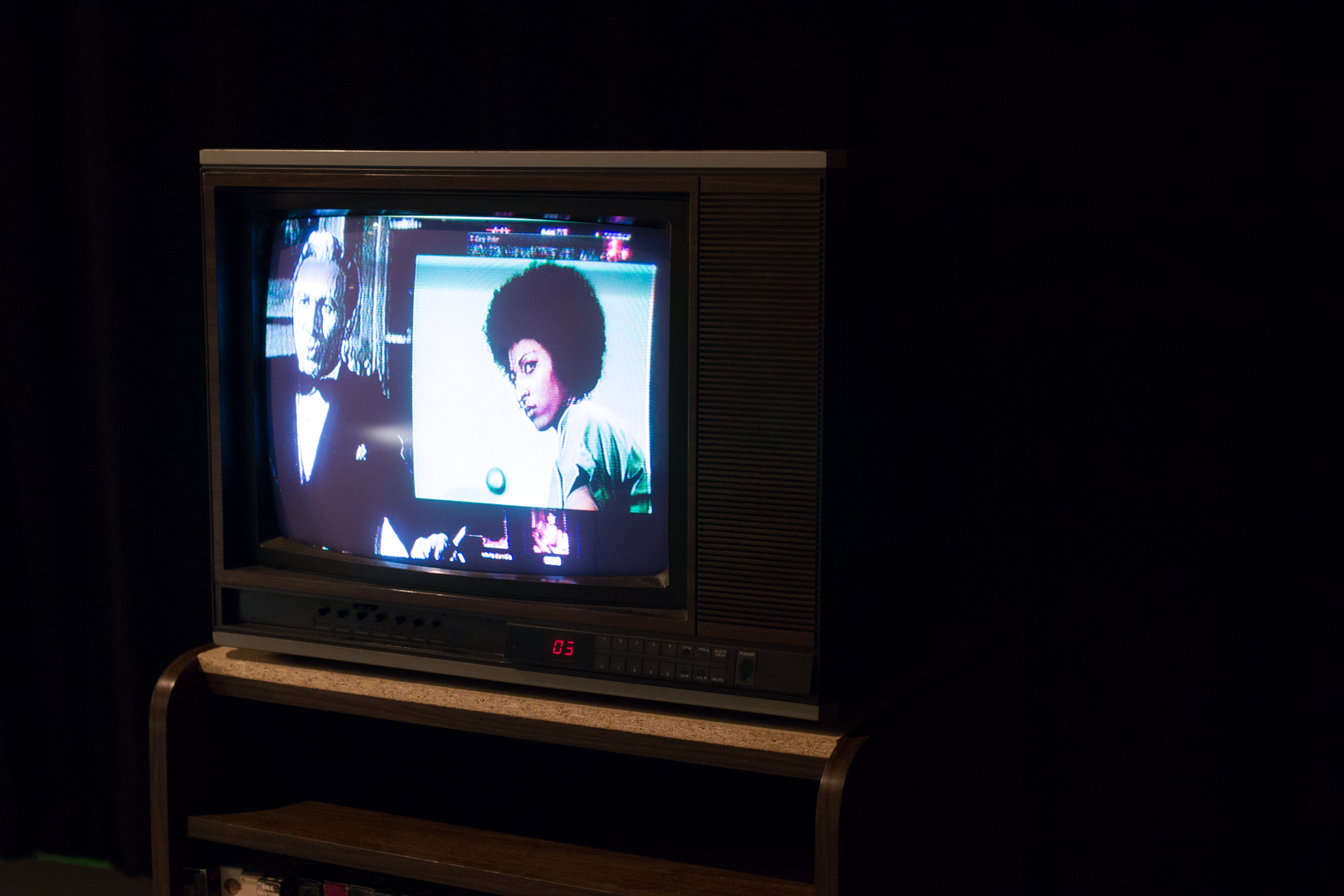
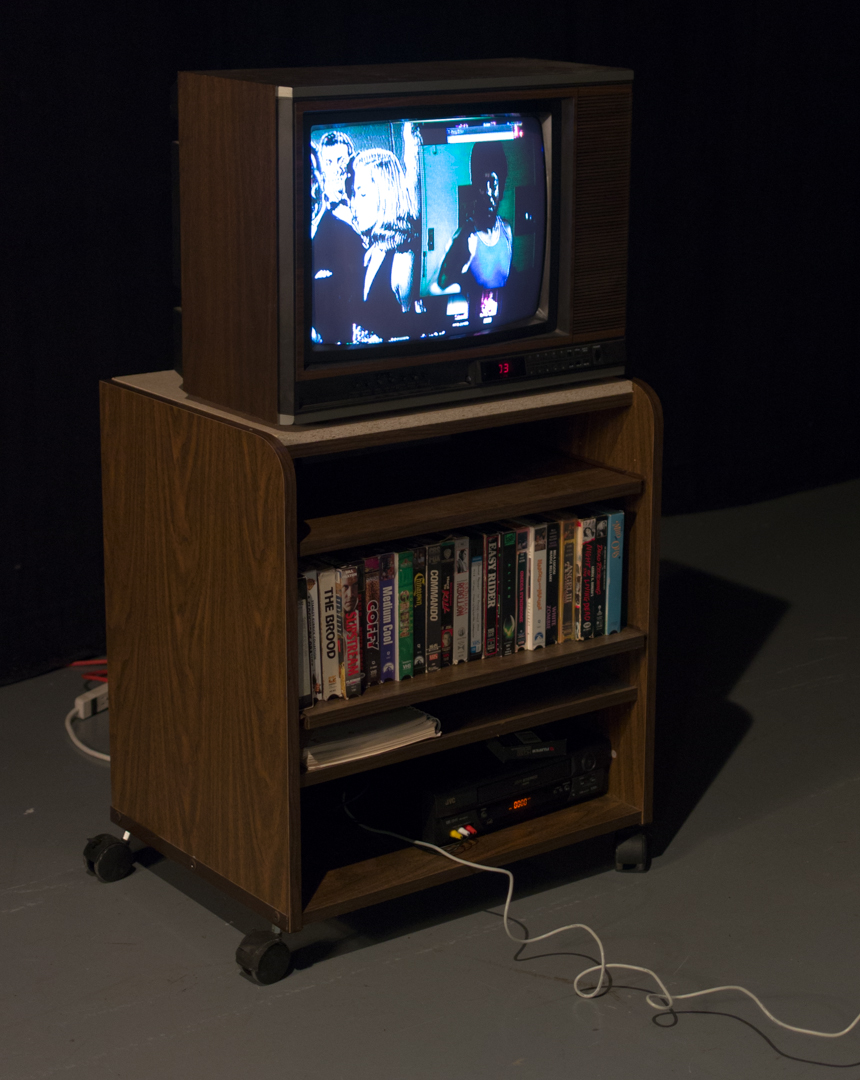
Due to market driven selling of electronics corporate entities design and advertise their products to be new and optimal so as to replace what has already been bought through planned obsolescence. Our present is always occupied by both old and new technology. Often the newest models of technologies are made to be wholly new eco-systems in which a generation of devices made can only communicate with one another and cut off old media tech as means of better capitalization by manufacturers. In other situations, the record player, CD player, HDTV, DVD + VHS player may all be occupying the same room. In the long-ago past records, eight tracks, lived in the super long cabinets of color TV. In some household’s digital cable is still being run on box television sets. These odd fitted arrangements are not manufacture specified. The combination of devices presents in a living room, den, and bedroom come about from the spending habits and eras of release, acquisition, and disuse. Although the free right of purchasing media certainly influences what enters a building how long the old technology occupies is an independent development.
But unlike the past of VHS/VCR, smart technologies make up the bulk of popular home entertainment. The LED screen and computing equals the Smart Television as way of compressing all viewing into a single device and few dongles. Yet if we look further back to a history of American consumer trends the PC computer revolution entering the home was a breakthrough in making computers more affordable to produce. Early models of home computers did not include a screen monitor. Like later stand-alone video game consoles, machines such as Commodore 64 had no built in GUI, instead were sold to be hooked into a television screen.

So, what if this type of convergence of a PC and VCR occurred in the past? What if a single television screen was host to both word processing and movies before the internet? Go even further, what if it weren’t a choice? If we were living in a socialist paradigm instead of a free-market society the idea of having only one TV, and one of each device is plausible as a policy or economic restraint. And if this socialist reality was even stricter the circulation of digital video disc (DVD) may not allow to be a public right to consumption. Reading chapters from the book Soviet Culture in the Brezhnev Era by Natalya Chernyshova I learned about the strict economic planning and easing of consumerism that occurred undern Leonid Brezhnev in the USSR. While shopping and consumer production grew there is always a state policy favoring frugality of durable goods and also the difficulty of securing consumer electronics and the pride in displaying home appliances. Such a reality would be a result of hodge-podge of acquisitions and shrines of home media and broadcastings.
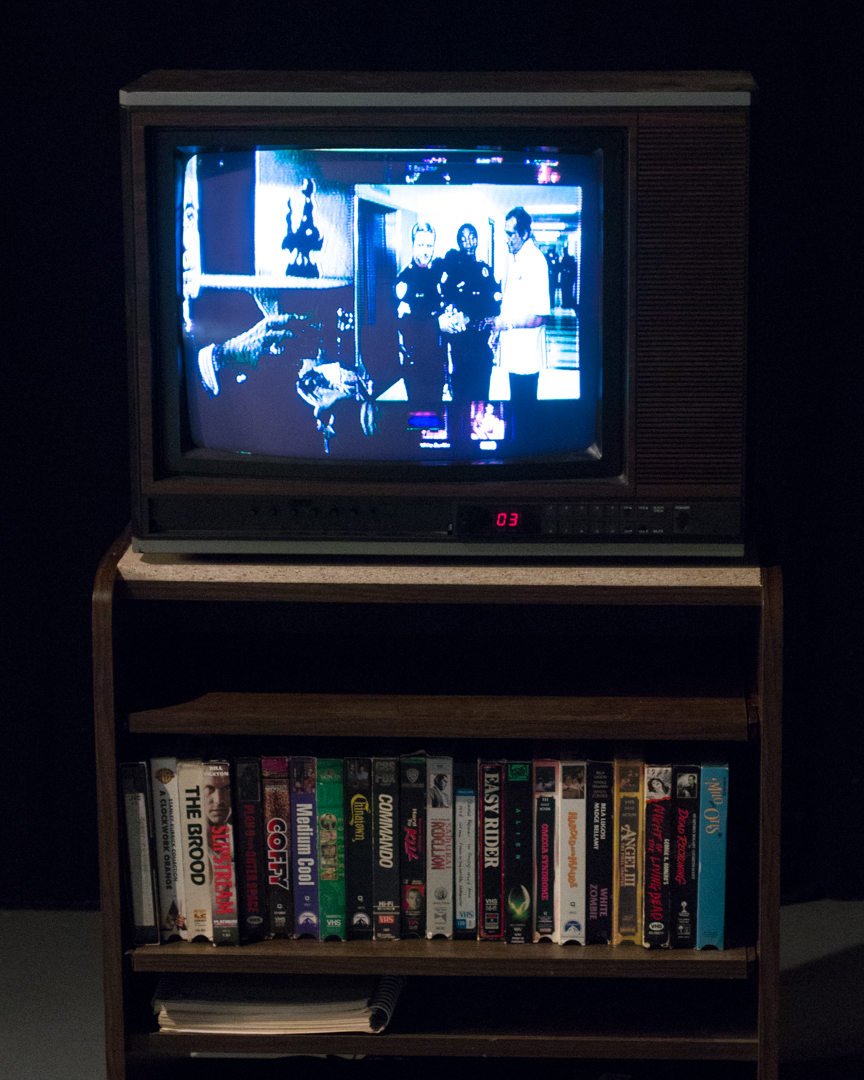
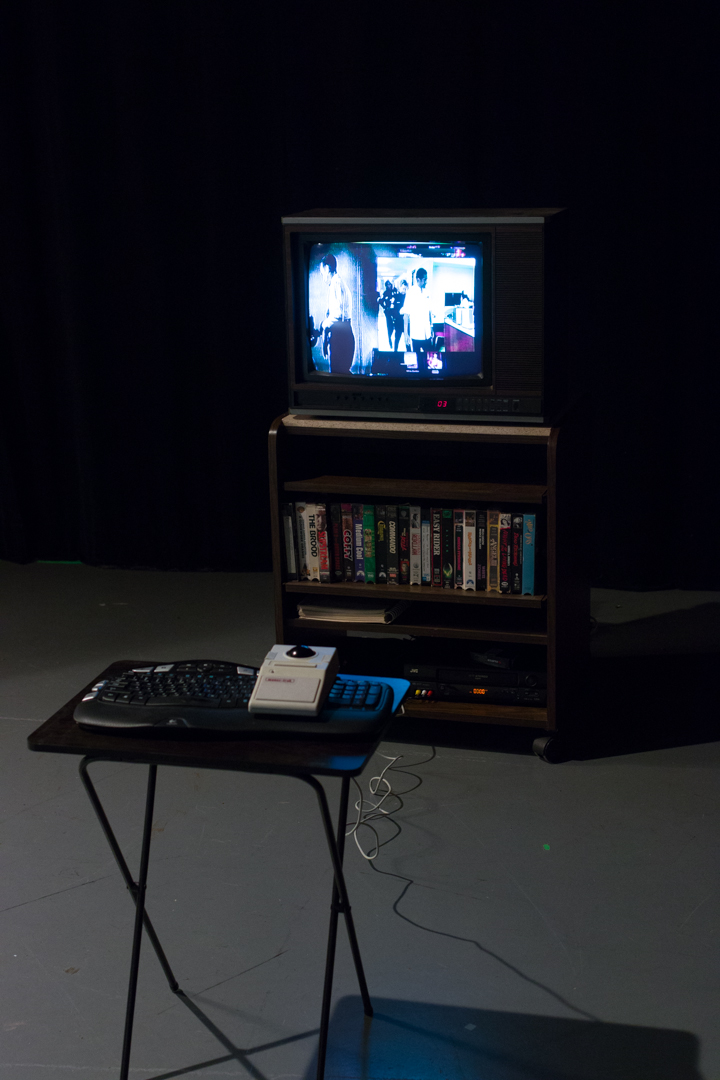
Based on the idea of connecting what is available in a restricted market with my own video tech experiments. A de-capitalized world merged with the AV conversions I was testing to connect HD processing to Analog SD video monitor I formed Computer Home Entertainment based the wood panel texture of my TV and the cabinet meant to store devices and media. An advent in time when the video tape library that is digitized when consumers are allowed to acquire screenless computers with USB capability. As a result, digital video files are available to view albeit their translated quality is low due to the loss of color sync and clarity. On the other side the computer video signal can also be VCR taped.
My own experimenting with the TV interface for poor digital VHS copies lead to very abstract play. Going from a full frame single file viewing to a multitude of windows I found myself looking for moments in the pictures and sound. I chose to alter size and modify arrangement or time of play for certain files. In effect I was making a matrix of video windows out of affective responses. In this mode of creativity, I imagine a Soviet government not being pleased with unauthorized authorship. Tapes could copy broadcasts even other movie tapes but to copy a remix of videos could be subversive for a number of reasons if transferred onto tape. The videotape in this case acts very much like a floppy disc’s magnetic tape. The circulation of pirate tapes of home-made video art is fascinating result from this imaginary scenario.

Computer Home Entertainment pokes at the separation of home video and computers held in common by video screens. It shows how the present trend of wireless and streamed media is expressed in an old form. It possesses a historical revision of social and material conditions. It shows a present-future artform in the desktop becoming a collage of film and internet production. It has become a prop for filmmaking and sample for academic media study.
Original Project Write Up For DMS 515 taught by Prof Alex Reid

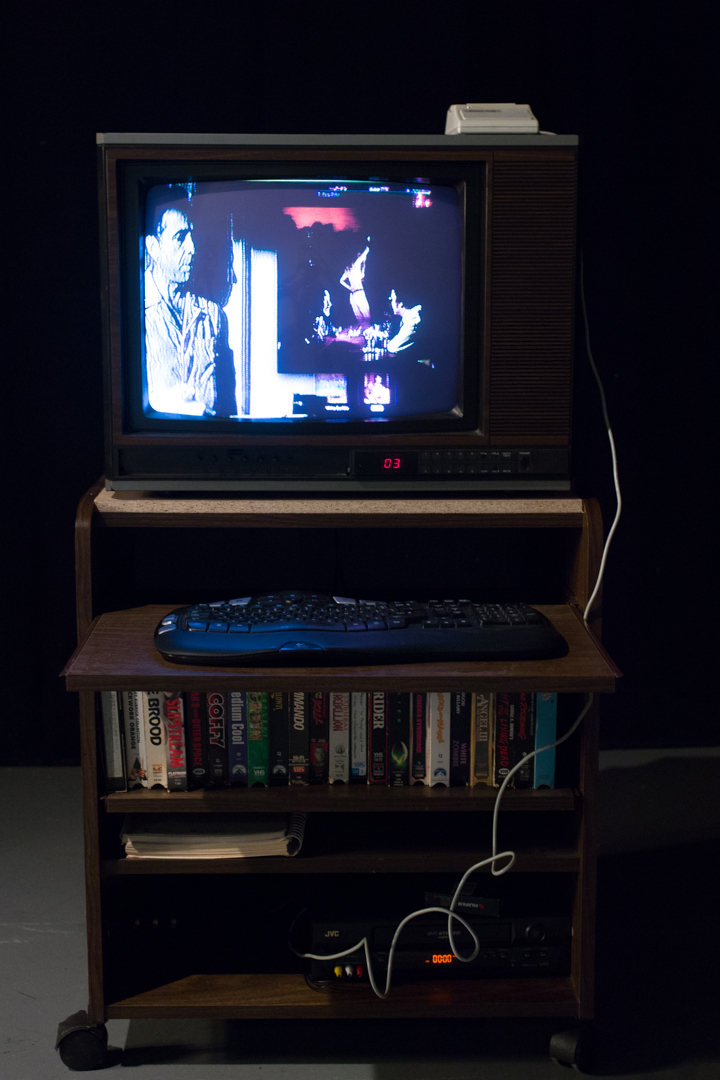
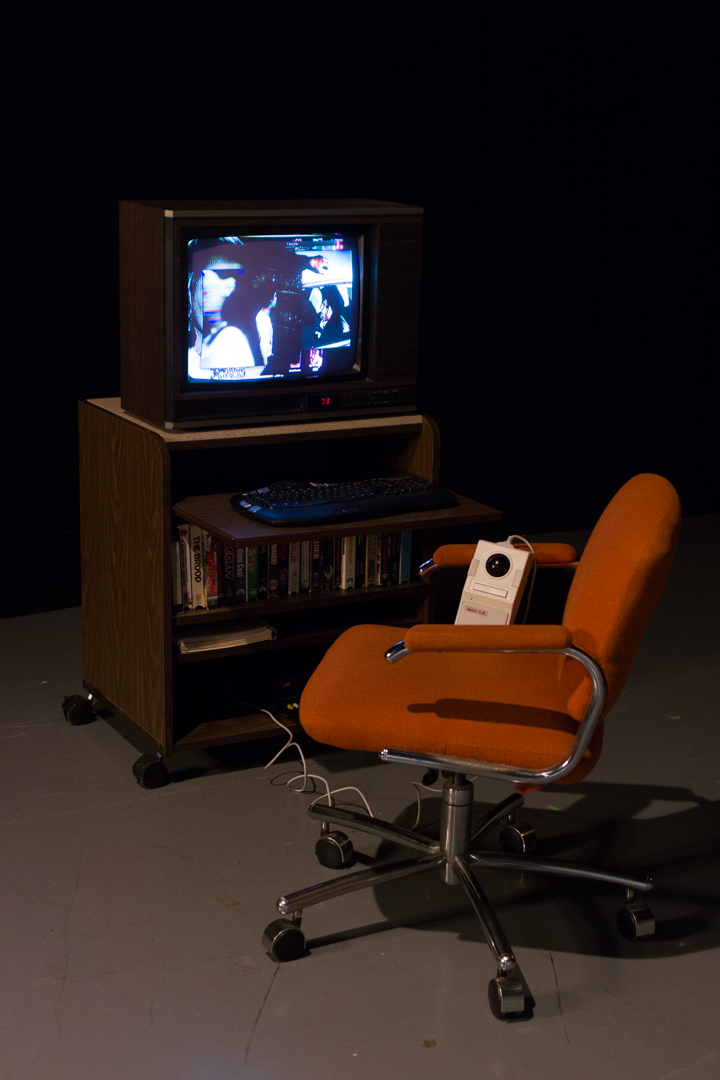
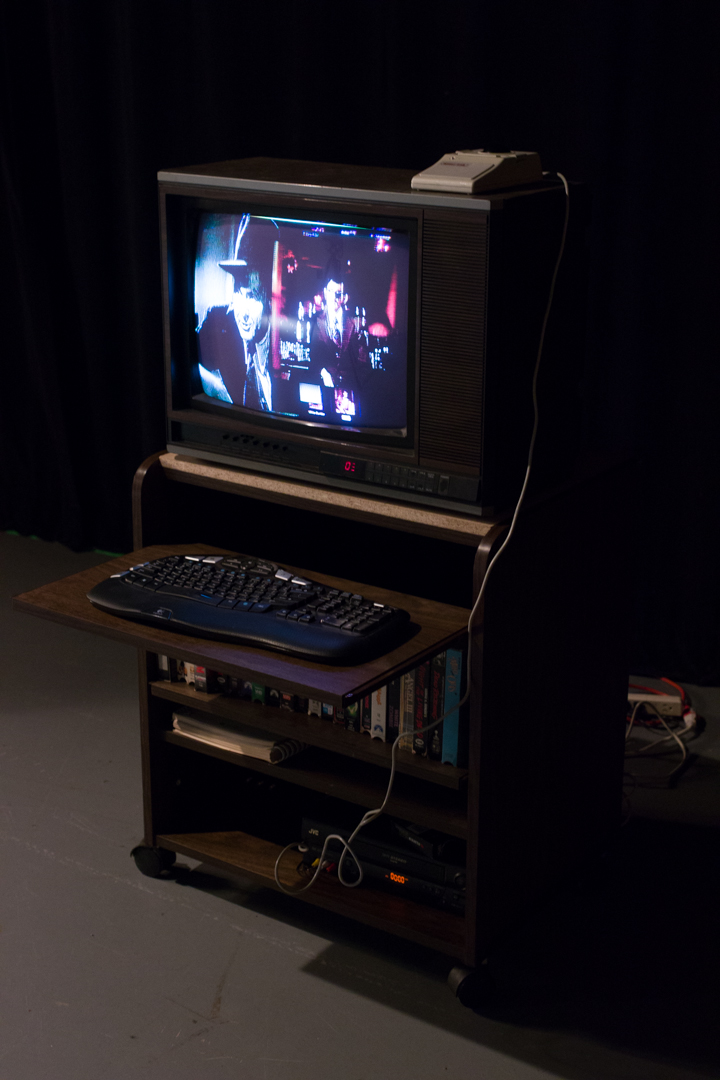
About Me ︎ Curriculum Vitae
Project Index︎︎︎
2023
Videosphere: You’re Always On A Screen Somewhere...
Brown Bunny
Inertia
2022
MAX Jitter Programming
FxR Versus AhR
Async Rolling
Always On
Enframing Rey
The Vidiot
Computer Home Entertainment
2021
Machine Learning: ATM
Pursuing Earth
THE LIBERTARIAN
Wiley World Wide Weather
ReWind Compressor
Discarding Earth
Being A Passenger
2020
Can(t) See Me Now!
ColorPress Brush
White Ball Flux Brush
THE APP
2019
PATS
2018
Ice Cream Drone
2015
Vanilla ISIS
2017
Invisible Foci
2014
Digital Synthesis Illustration
2013
Rood World
Synthesis Ilustration
2011
Verse
Master (Series)
Video Being
2010
Dance Aches
Bangalor
︎ macherno@buffalo.edu
︎ videoarchaeology
︎ michaelchenoff
︎ michaelchernoff
︎ videosignified
︎ michaelchernoff
︎ Videosphere
©2010-2023 Michael Chernoff